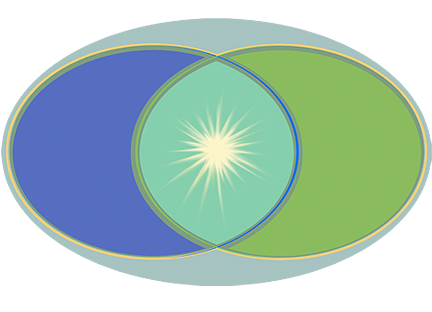Empowerment Therapy (ET) is for therapists and others who want to accompany people on the journey towards equilibrium, wholeness and connection with their authentic self.
Testimonial
“Empowerment Therapy helps you to get out of your ‘head space’ and grounded into the power of your heart.”
- Cynthia Koskiewicz, LCPC, CADC
What is Empowerment Therapy?
Grounded in the work of Marshall Rosenberg and Carl Rogers, Empowerment Therapy (ET) is founded on the fulfillment of universal human needs. The underlying principle is that when our needs are met, we feel and do well.
Most people seek help because they have unmet needs which they are having difficult identifying and expressing. They may experience malaise but can only account for it in general terms. “My teenage son doesn’t listen.” “My partner is distant.” “I’m unhappy at my job.” Even when they are able to transform cognitive distortions, they are not necessarily able to identify their needs and ask for what they want. The reason for this has to do with early disconnection from needs compounded with self-judgment and conditions of worth.
Marshall B Rosenberg
Carl Rogers
The Empowerment model supports us in helping our clients identify, trust, and endeavor to meet their needs. Beyond symptom reduction, we help people to be happy and thrive.
Empowerment Therapy Program
Not just for therapists
Collaborative Learning &
Coached Practice Groups
7:00 - 8:45 pm Central Time
Empowerment Therapy is for therapists, coaches, and anyone who wants to do Empowerment work — help others create more satisfying relationships and build more fulfilling lives. The three pillars of our work are healing, liberation, and empowerment. Empowerment practitioners don’t need a mental health background. While the work is therapeutic, it’s not a substitute for professional psychotherapy.
————————————————————————————————————————————
Frequently Asked Questions
-
I, Myra Walden, developed the model based on my own experience in therapy with a Client Centered practitioner, Dr. Marge Witty, my never-ending study of the human psyche, and over 30 years practicing psychotherapy in community mental health centers and private practice. In 1998, I started studying Nonviolent Communication and began to incorporate the concepts into my life and therapy practice. In 2021, I codified my experience and developed a coherent therapy model. We will need research to demonstrate its effectiveness, gain credibility and broaden usage in the field.
I was 28 years old. At a gathering of friends, each of us was to answer the question, “Where do you see yourself in 10 years?”
Myra: “I see myself divorced.”
Friend: “Myra, but you’re not even dating!”
No, I wasn't dating at the time, but I knew that if I were to get married, no one would put up with my temper for very long. My anger and reactivity were an aftereffect of the many years of severe lack of safety and respect I went through as a teenager that resulted in self-loathing and troubled relationships.
At age 33, I sought psychotherapy and pursued my healing in earnest. The work bore fruit. My beloved late husband of 35 years, Peter, saw me through the angry stage, and we built a relationship of Connection, Closeness, and Communion for which I am forever grateful.
-
No. It is for mental health professionals and anyone who wants to learn to accompany others in their journey of healing, growth and fulfillment, even if they don’t have a background in mental health.
This approach is grounded on Carl Rogers’ seminal paper The Necessary and Sufficient Conditions of Therapeutic Personality Change. In it, Rogers describes the attitudes necessary to develop a therapeutic relationship. And, as we understand from the research, the most important aspect of therapy is the relationship between the therapist and the client. ET offers comprehensive guidelines to build the therapeutic alliance. At the same time, we are clear about cases when it is important to refer clients to mental health professionals.









